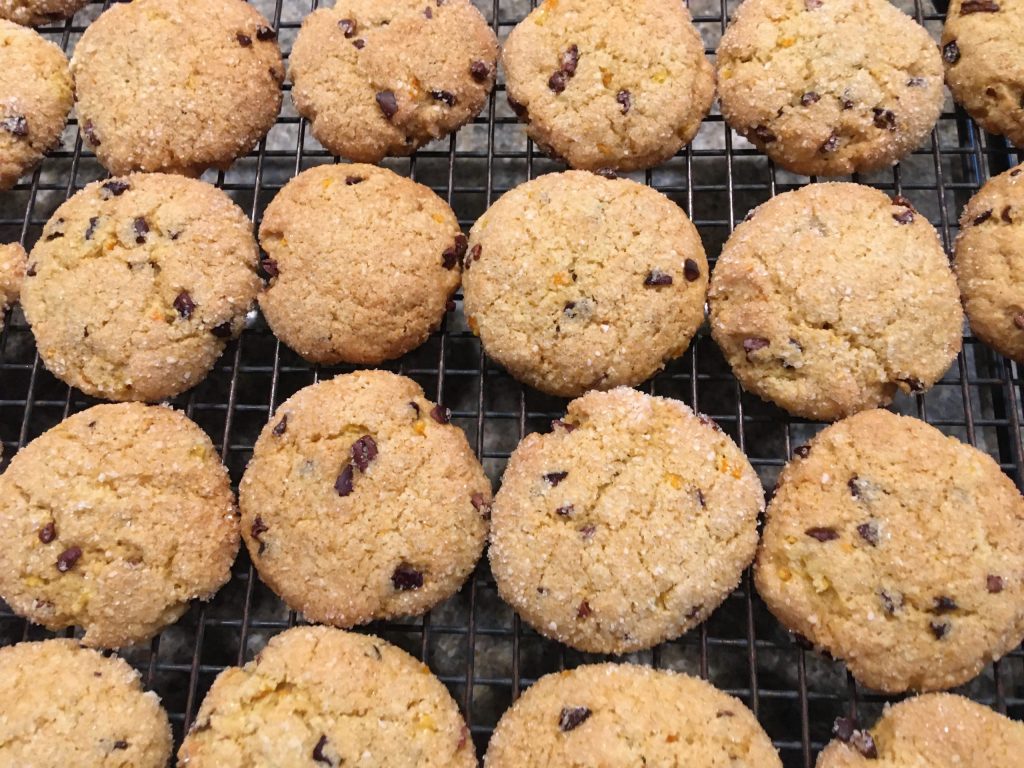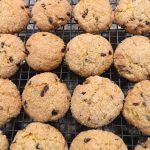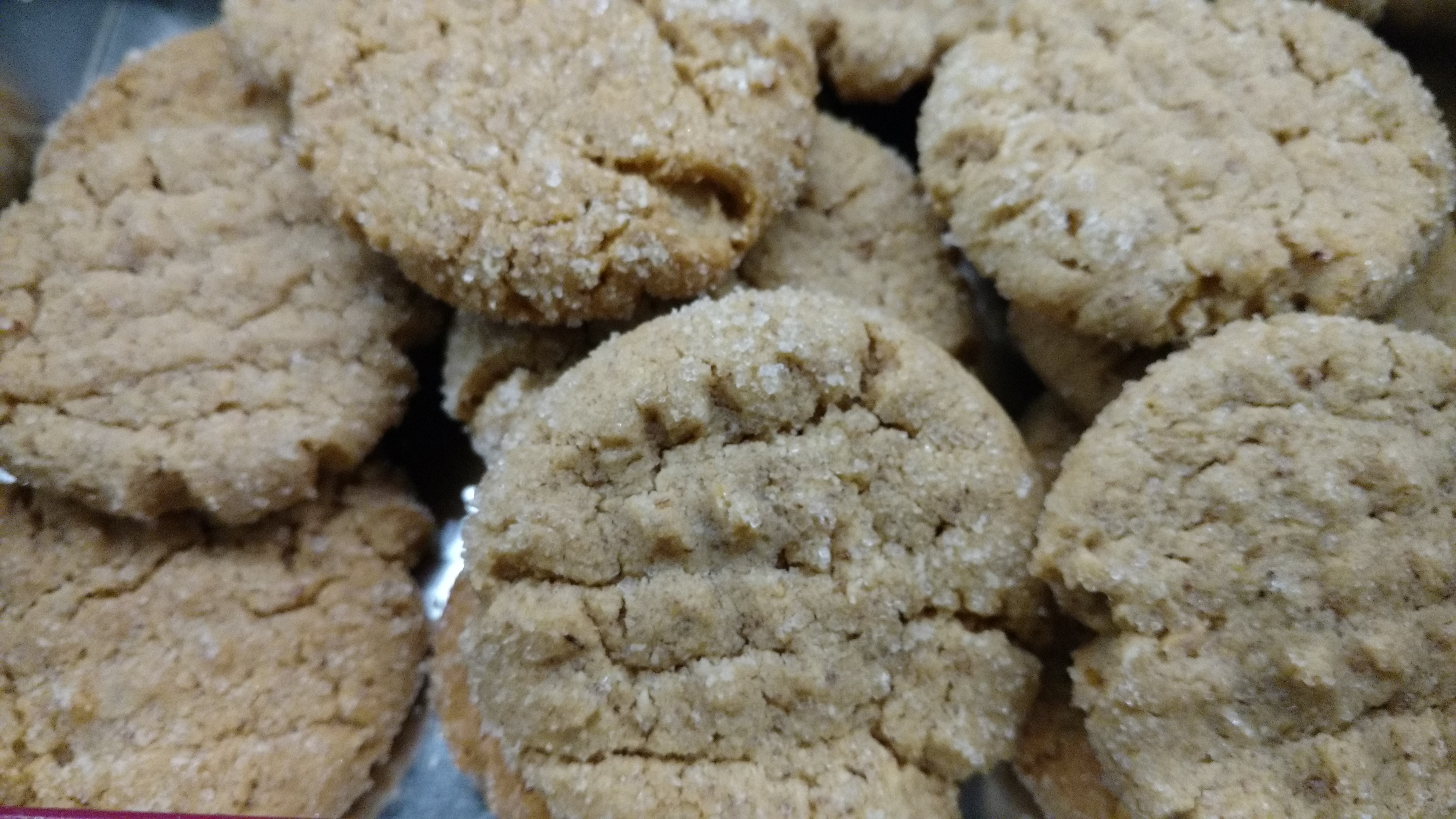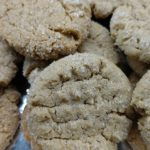
Back in the day, when we could eat in restaurants, we often wished for just a small sweet after the meal. Not a huge piece of cake, not a wedge of pie, just a single chocolate or a small cookie to go with our coffee. Of course, we don’t drink coffee after dinner any more either… But that little bit of sweetness, without breaking the calorie bank, is still what I’m after. That’s what Italian cookies were made for.
I baked many a cookie in my time on the farm, and since, as well. American cookies tend to be big, buttery, chocolaty and very sweet. Which was precisely what I wanted as a kid. But as I got older, something else was in order. And I discovered that something in the Old North End of Boston, a community where Italian immigrants had settled in the early 20th century. I was amazed at the lines of colorful laundry strung across the street from second story apartments, with women hanging out the windows to chat with neighbors. The shops, cafes and bakeries, many operated by generations of Italian families, beckoned us to get a biscotti and cappuccino to rest our feet and spirits as we hiked around, exploring the history of the Revolutionary War.
The bakeries were my favorite of course, with their tempting, colorful displays of cookies. Italian cookies were a new experience, from crunchy biscotti, dunked into one’s coffee to soft nut paste cookies, studded with pine nuts. Layered almond flour cookies. Meringue amoretti. Almond macaroons. These cookies were firmer, denser and chewier than my usual cookie, as well as less sweet. With less sugar, the intense flavors of citrus, almond and anise shine. To this day I never pass up a chance to duck into an Italian bakery.
I took up baking such cookies about the same time as baking Italian style breads. I still bake cookies often to accompany our lunchtime cappuccino, and this recipe is a favorite. It’s made with oil rather than butter; substituting applesauce for part of the oil not only cuts the fat, it makes them ultra chewy. The citrus flavor sparkles, with soft notes of almond in the background. Crisp outer shell with a chewy middle. A faint whiff of chocolate from the cocoa nibs. You’ll have to excuse me, I need to make a cappuccino, grab a cookie and go relax on the patio…
Citrus Almond Cookies
Ingredients
- 2 tblsp finely diced orange and lemon peel zested in strips from the fruit, then diced
- 1 cup sugar, divided
- 1 3/4 cups almond flour, divided
- 1 cup white whole wheat flour
- 1/2 tsp salt
- 1/2 tsp baking soda
- 1/3 cup olive oil
- 1/4 cup applesauce
- 1 egg
- 1/4 tsp vanilla Fiori de Sicilia, if available
- 1/2 tsp almond extract
- 1/3 cup cocoa nibs
Instructions
- Preheat the oven to 350 degrees F. and line 2 cookie sheets with parchment paper. Combine the diced citrus peel with 2/3 cup of the sugar and set aside.
- In a large bowl, mix together 1 1/2 cups of the almond flour, flour, salt, baking soda and cocoa nibs.
- In a small bowl, whisk together the olive oil, applesauce, egg and extracts. Blend well, then mix in the reserved sugar mixture.
- Stir the liquid ingredients into the dry ingredients in the large bowl and mix well. Combine the remaining sugar and almond flour in a small bowl. Scoop the cookies by rounded teaspoonful, and roll in the almond flour and sugar mix. Roll between your hands into balls, then place on the prepared sheet and flatten slightly with your fingers or the bottom of a glass.
- Bake 12-15 minutes, until lightly browned and firm. Remove to a cooling rack.


 Anyone who’s anybody these days has a wheat story…
Anyone who’s anybody these days has a wheat story…